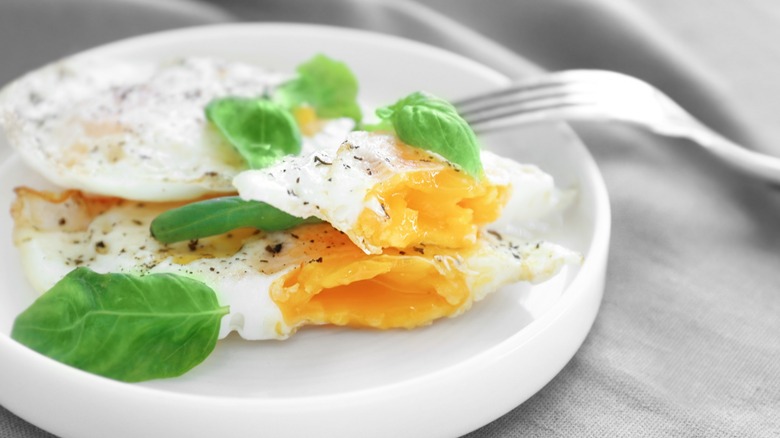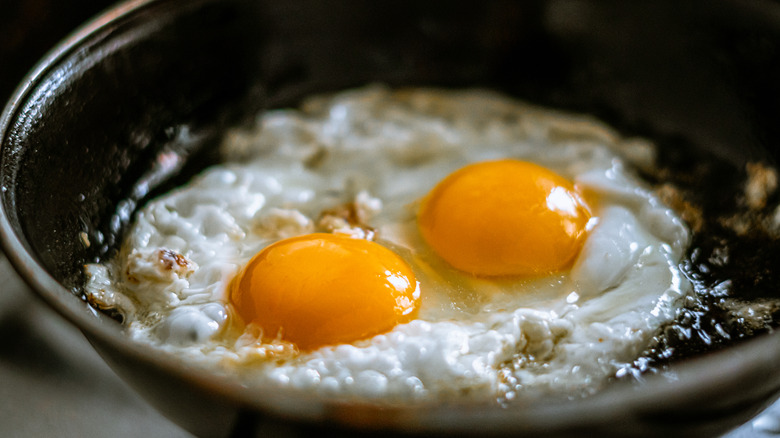For Perfectly Cooked, Over-Medium Eggs, Take Your Cue From The Whites
Eggs, humble as they are, stand as a testament to the complexity that can be found in simplicity. Within the realm of simple fried eggs, we find various styles — from sunny side up with a gleaming, runny yolk and over-easy, its flipped version that still preserves a liquid yolk, to over-hard with a fully set, firm yolk. The most nuanced of these is the over-medium egg.
With a slightly runny yolk encased by gently set whites, it's the bridge between the over-easy and over-hard worlds, offering a bit of the best from both. But while it's easy to admire the intricacies of the over-medium egg, it's often elusive in its creation. The journey to mastering this technique is often marked by overcooked yolks or undercooked whites, tarnishing the experience for many home cooks.
The challenge, for many, lies in mastering the flip. However, the simple, often overlooked trick to getting it just right is paying attention to the whites. That's right — this age-old culinary secret rests not in the yolk, where many place their focus, but in the unassuming egg white that surrounds it.
How to cook the perfect over-medium egg using the whites as a guide
Begin by cracking your egg into a nonstick pan set over medium-low heat with a touch of butter or oil to prevent sticking. As it begins to cook, the first change you'll notice is in the egg white. It will begin to solidify, changing from clear to opaque. Your cue here is to watch the outer edges of the white.
As the whites cook, you'll notice a transformation in texture, firming up from the outer edges inward. However, instead of waiting for the entire white to set — which would mean a fully cooked yolk — you should be prepared to make your move slightly earlier. When you see the majority of the white set, but there's still a thin layer of uncooked white just surrounding the yolk, it's time to make your flip.
Gently slide a spatula underneath, ensuring not to break the yolk, and flip the egg over. After flipping, you only need to cook it for a short while longer, about one to two minutes. This ensures that the remaining white solidifies but the yolk remains semi-fluid, achieving that over-medium consistency. To confirm the doneness of the yolk, gently touch the top with your finger, it should feel a bit soft but not jiggly or firm. Try this a few times and with a bit of practice and attention, you'll find that crafting the perfect over-medium egg is within your reach.

